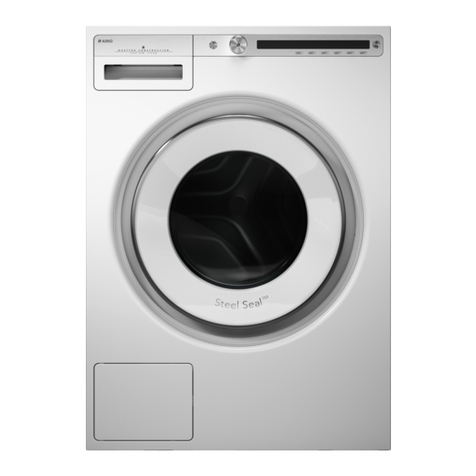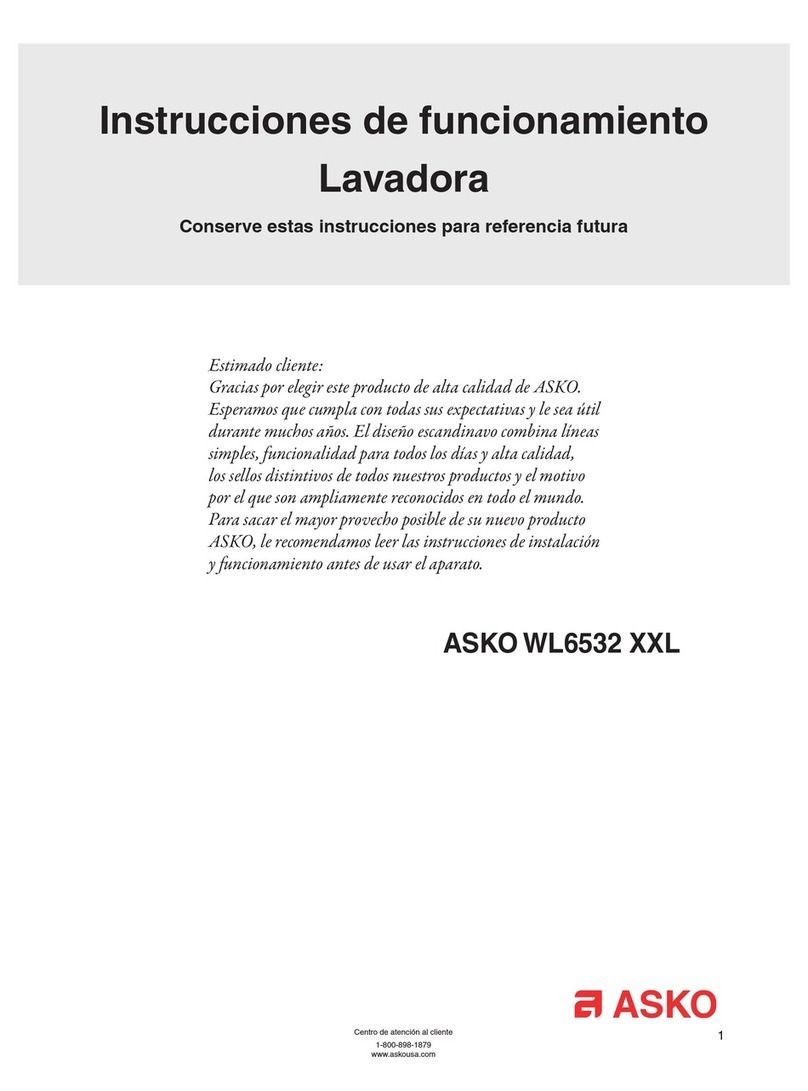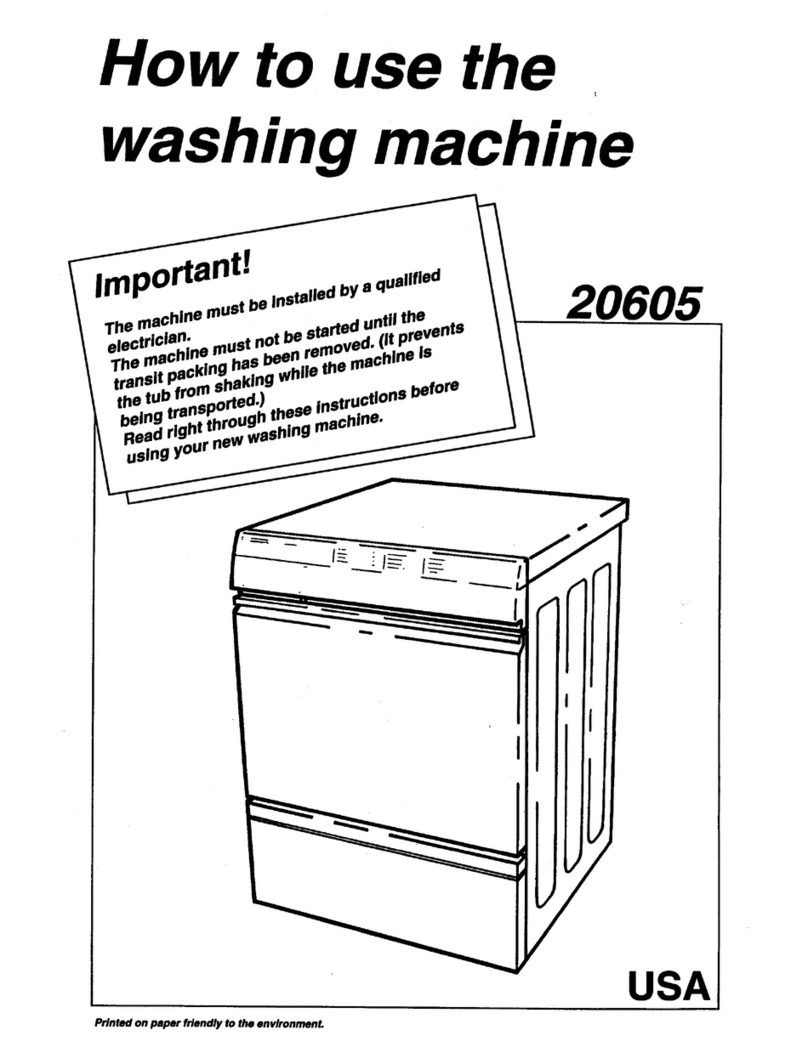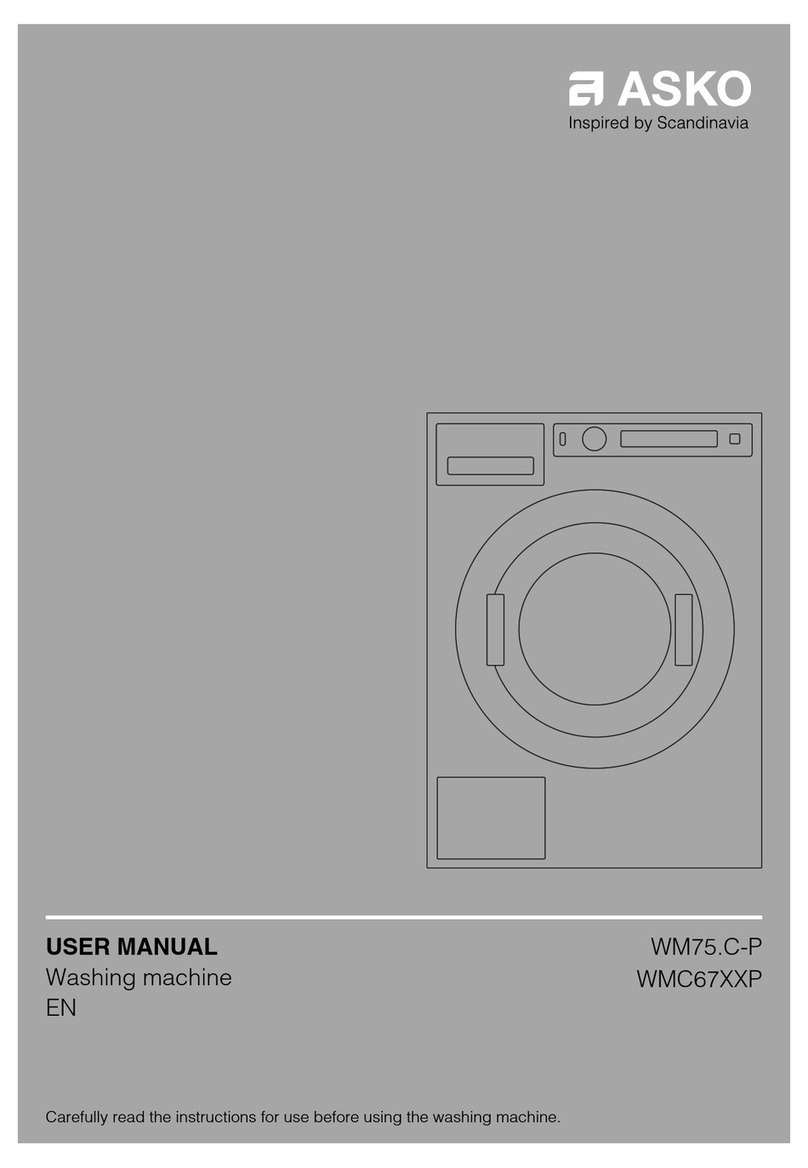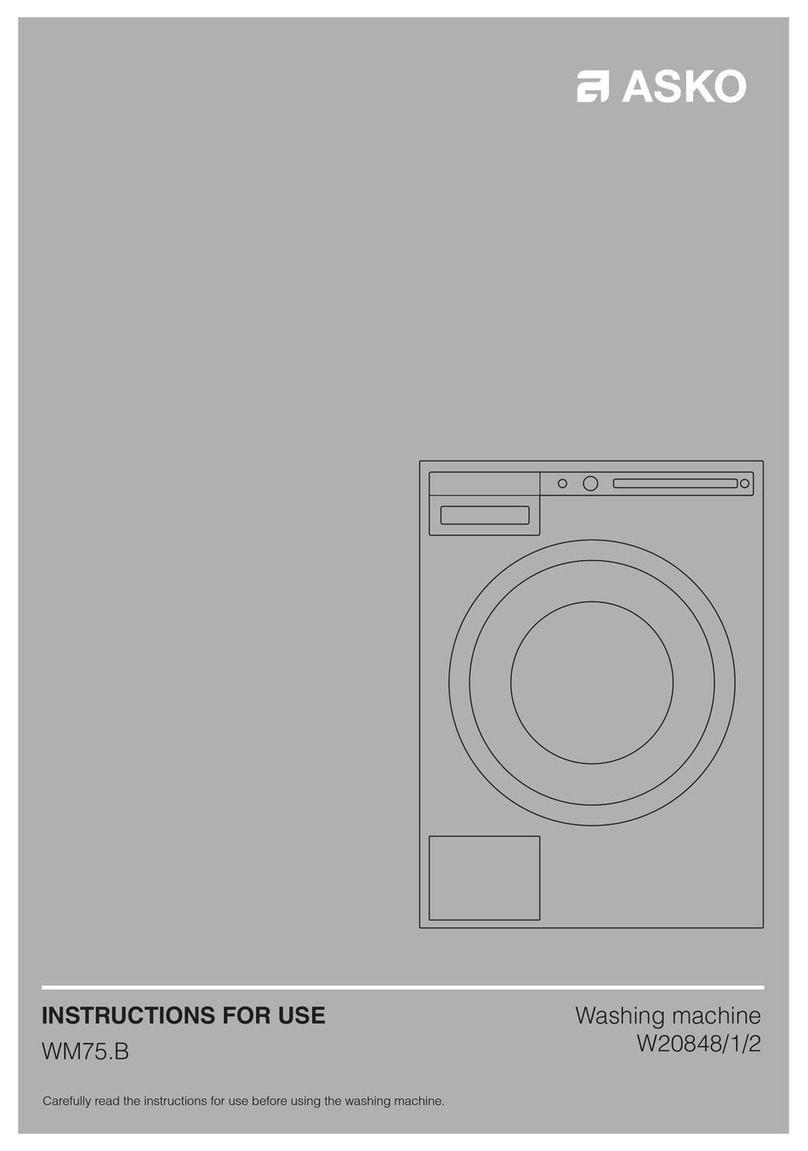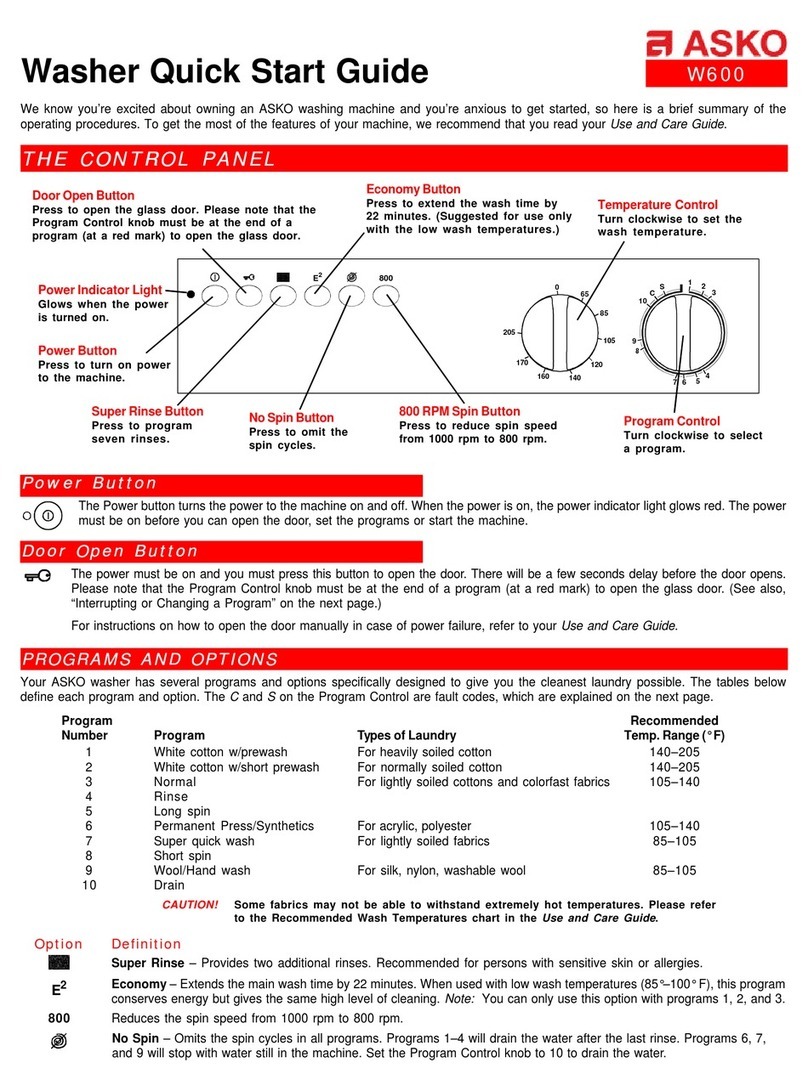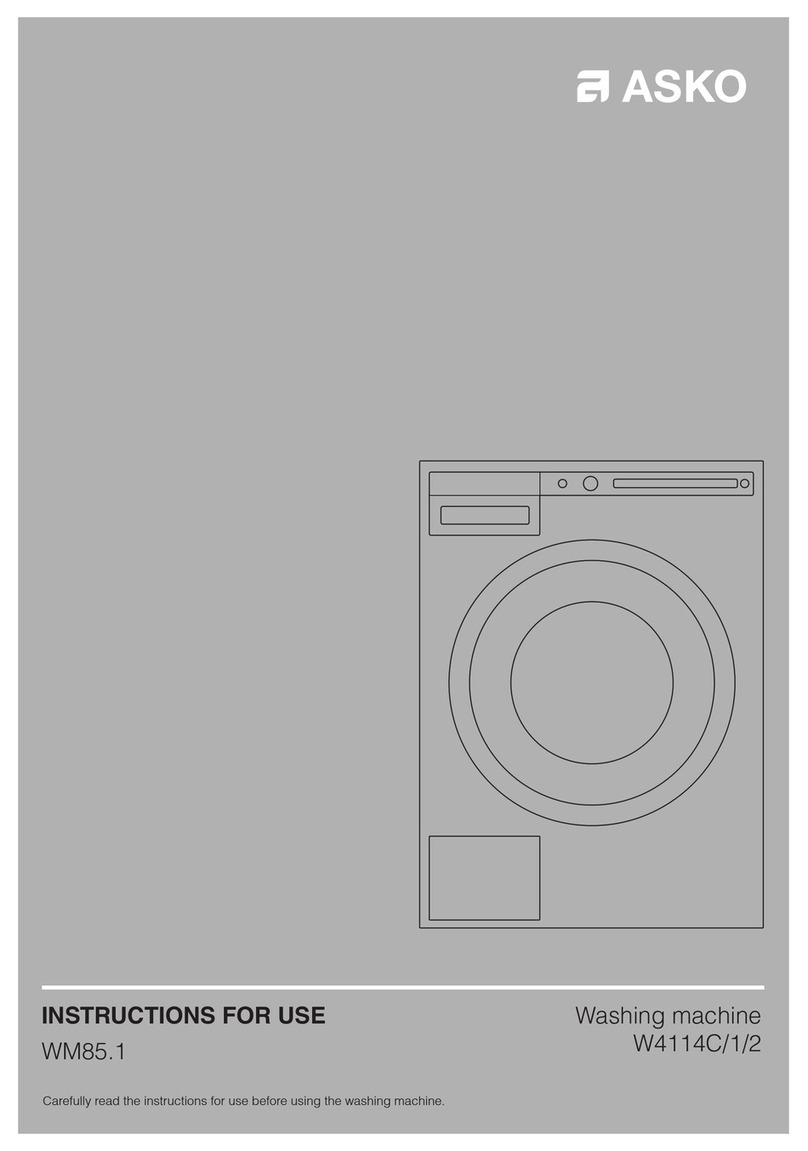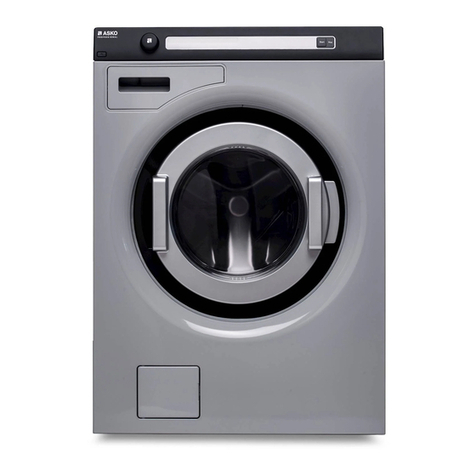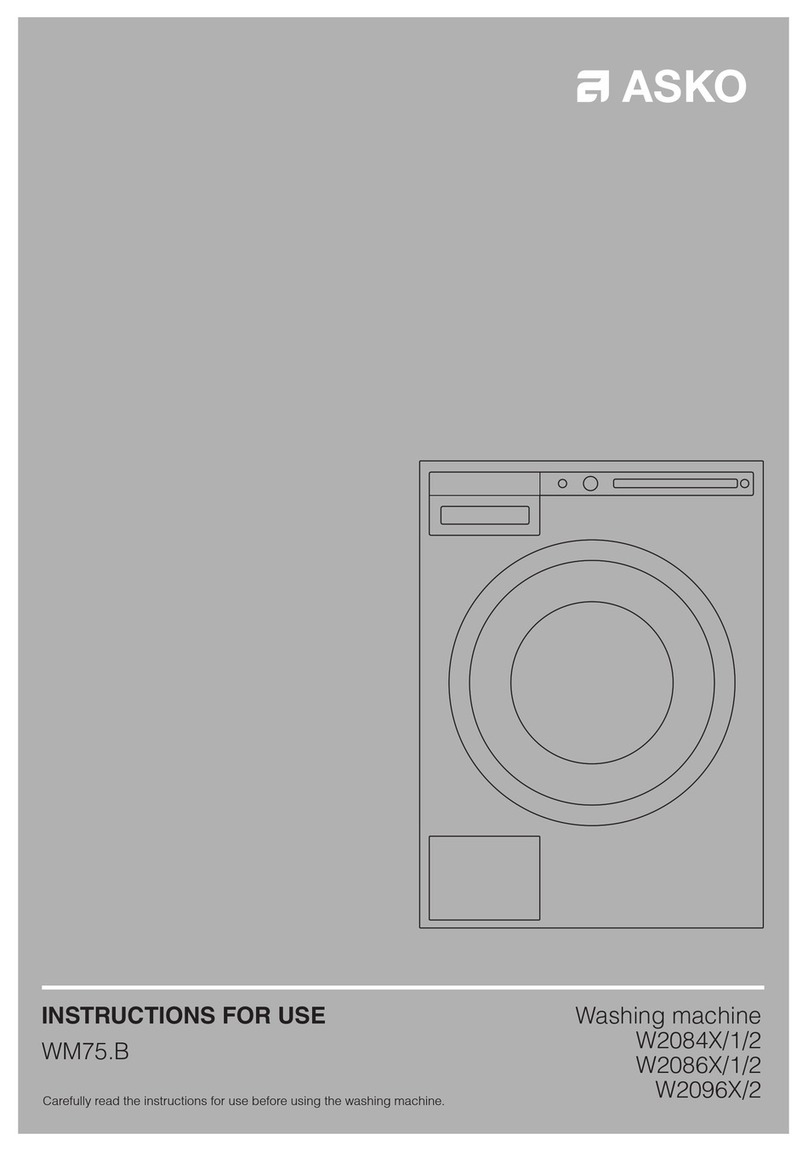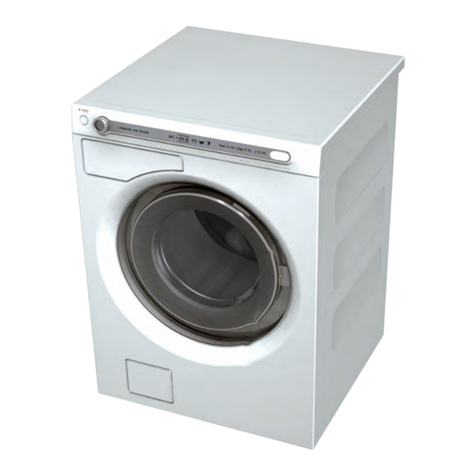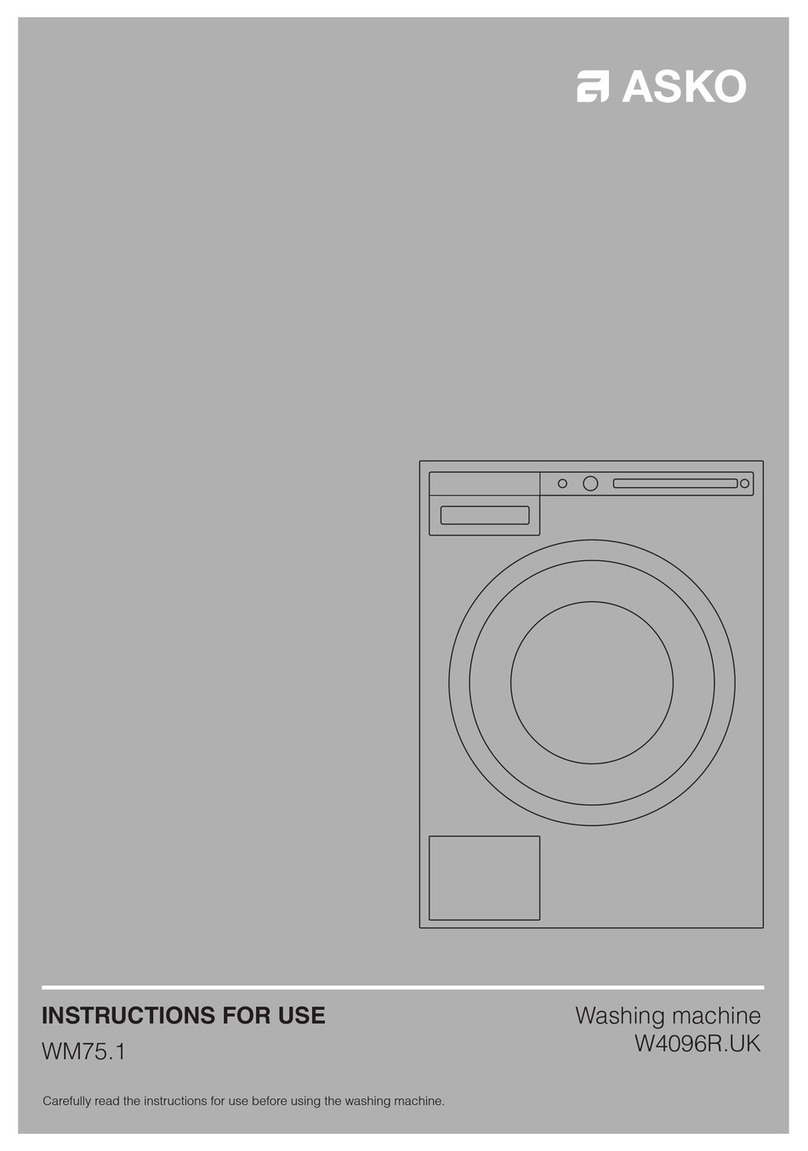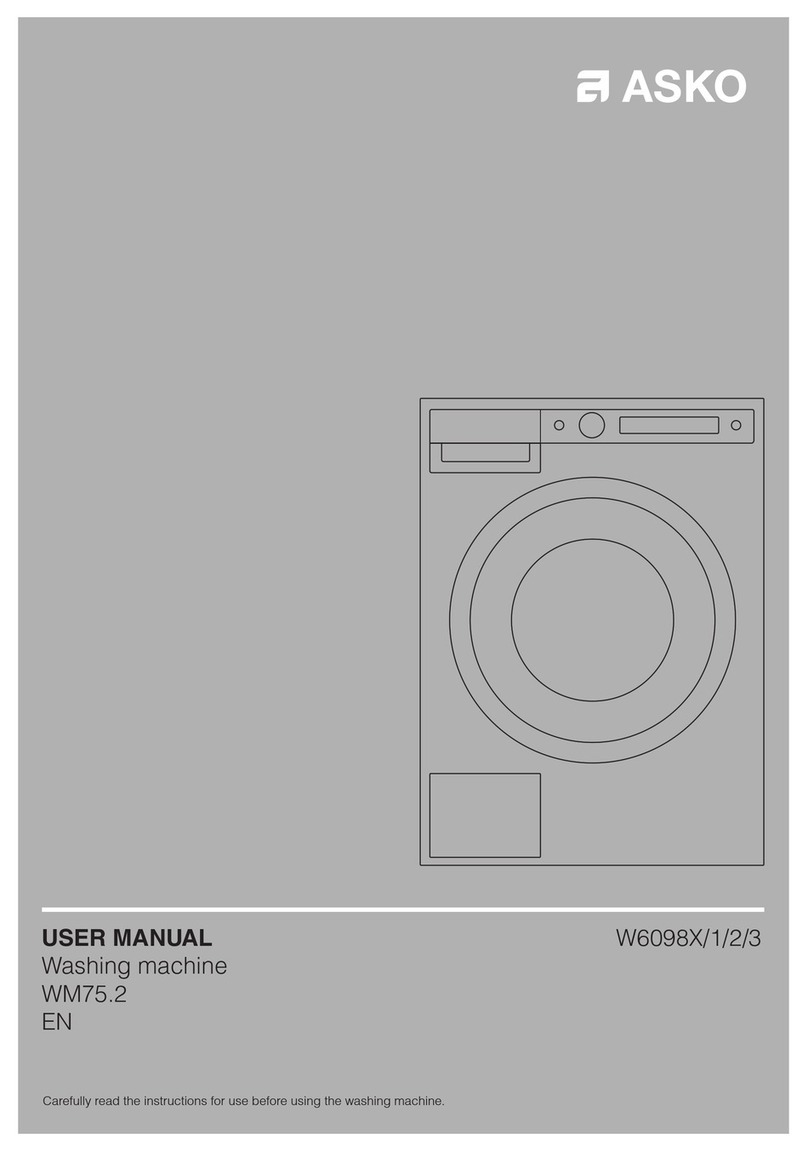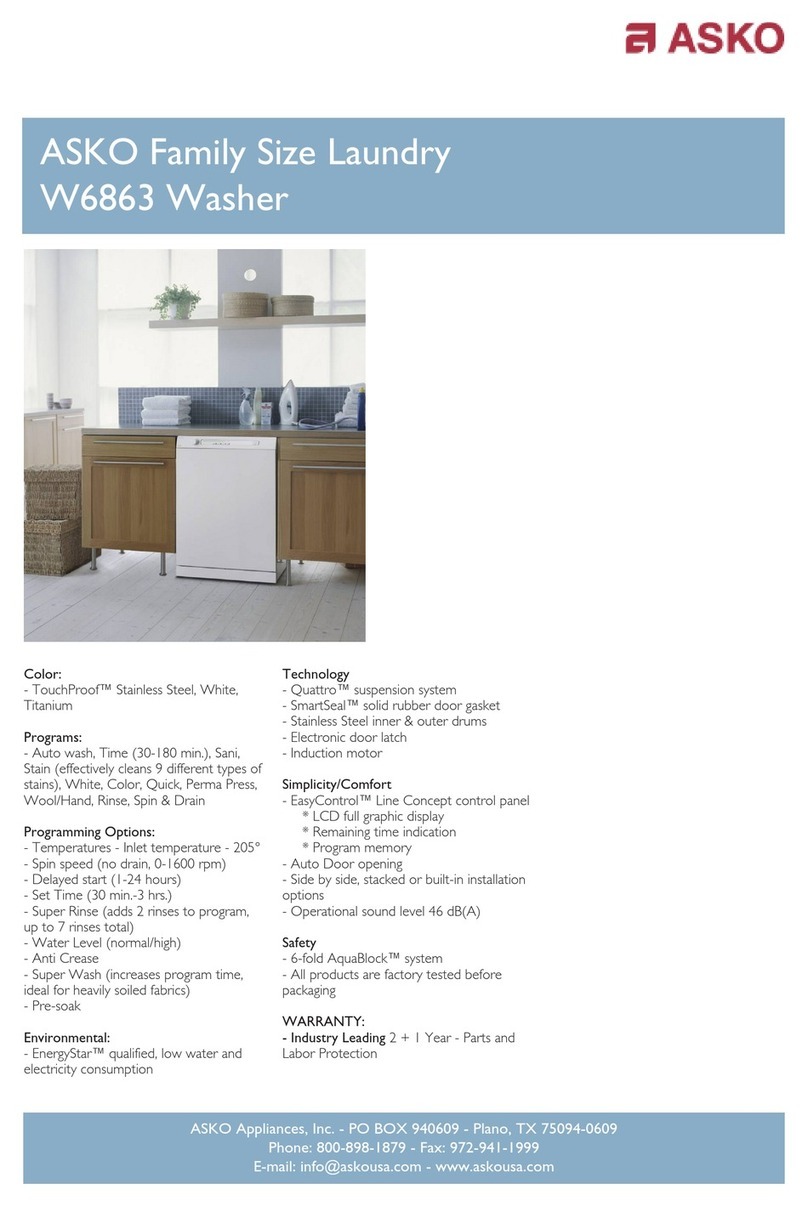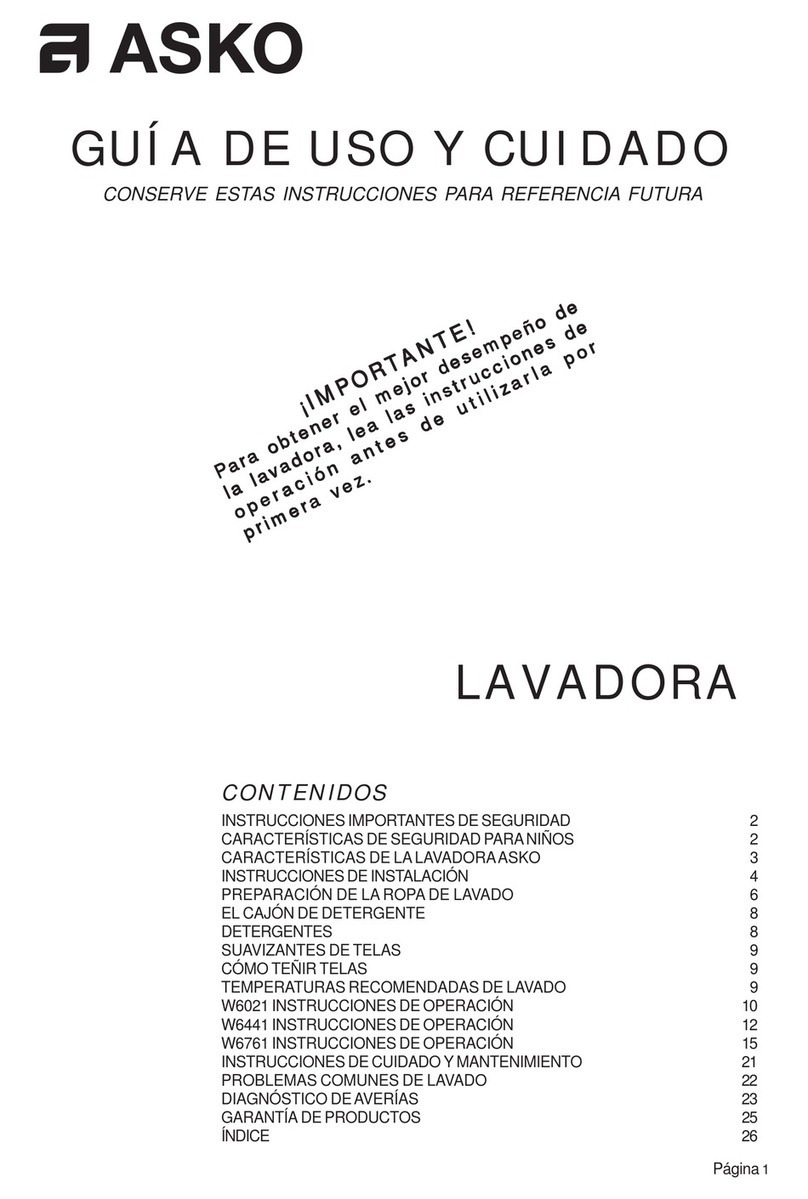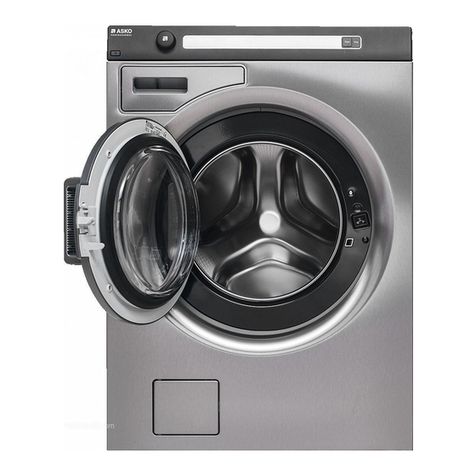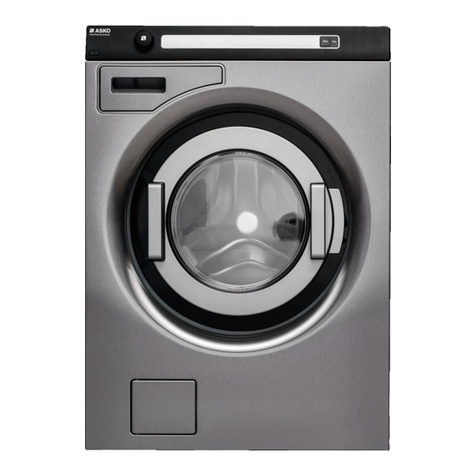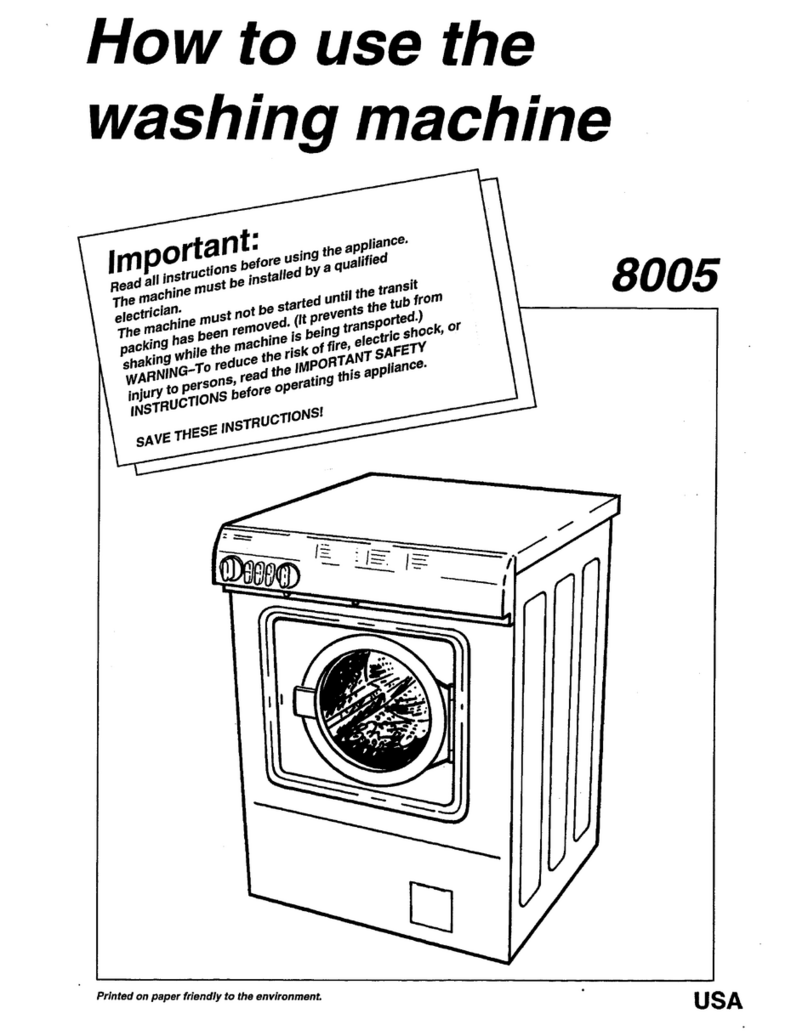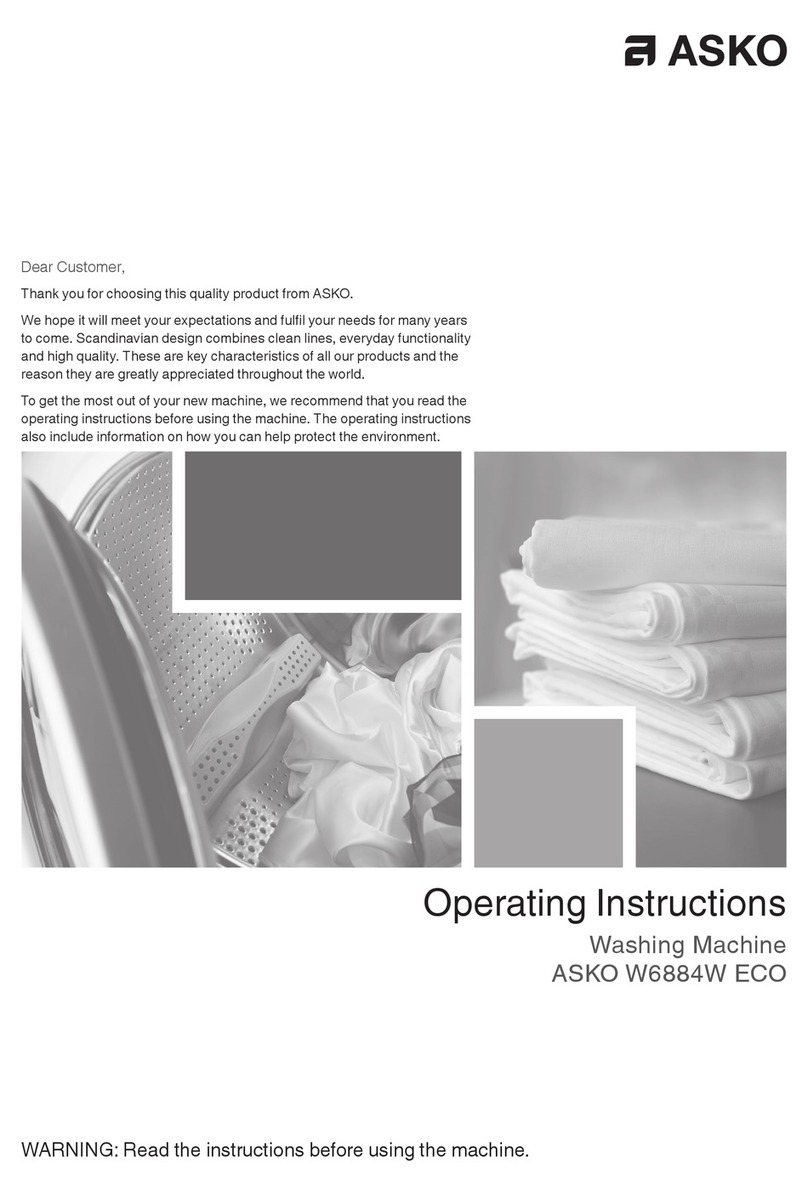
5
General
• Read the operating instructions and
keep them in a safe place.
• Installation of water and electricity, if
required, should be carried out by a
qualified professional.
• The appliance is intended exclusively
for use in households.
• The machine should only be used for
washing items as described in these
instructions. It is not intended for dry
cleaning.
• Use only detergent intended for
machine washing!
• Use only detergents and softeners
for machine wash. Manufacturer may
not assume responsibility for any
damage and eventual discolouring of
gaskets and plastic components as a
consequence of incorrect use of bleach
and/or colouring agents.
• Never use detergents containing
solvents, since there is a danger of
creating toxic gasses which may
damage the machine and result in
ignition or explosion.
• Remove any transport protection
devices before using the machine. See
the "Transport protection" chapter.
• Repairs and maintenance relating to
safety or performance must be carried
out by a qualified professional.
• Damaged mains cables must only be
replaced by a qualified electrician.
• The machine is not designed to be
used by persons (even children) that are
physically or mentally handicapped or
lack experience and knowledge. Such
persons must receive instruction in how
to use the machine from the person
responsible for their safety.
• Children must be watched to ensure
they do not play with the machine.
• The emergency door opening tool is
attached to the rear of the detergent
compartment. Remove the detergent
compartment from the machine and
remove the emergency door opening
tool.
Installation
See the "Installation" chapter.
Overflow guard function
If the machine’s water level rises above the
normal level, the overflow guard function
begins to pump water out and shuts off
the water intake. If the water level has not
dropped within 60 seconds, the program is
terminated.
Transport/Winter storage
If the machine is to be transported or
stored in unheated premises where the
temperature can fall below freezing, do as
follows:
• Empty the filter and the drainage pump.
See the "Care and cleaning" chapter.
• Shut offthe water to the washing
machine, loosen the supply hose to the
intake valve and let the water run out
from the valve and hose.
• After emptying the pump, a small
amount of water may remain in the
machine. This does not affect quality or
damage the machine.
Safety instructions
